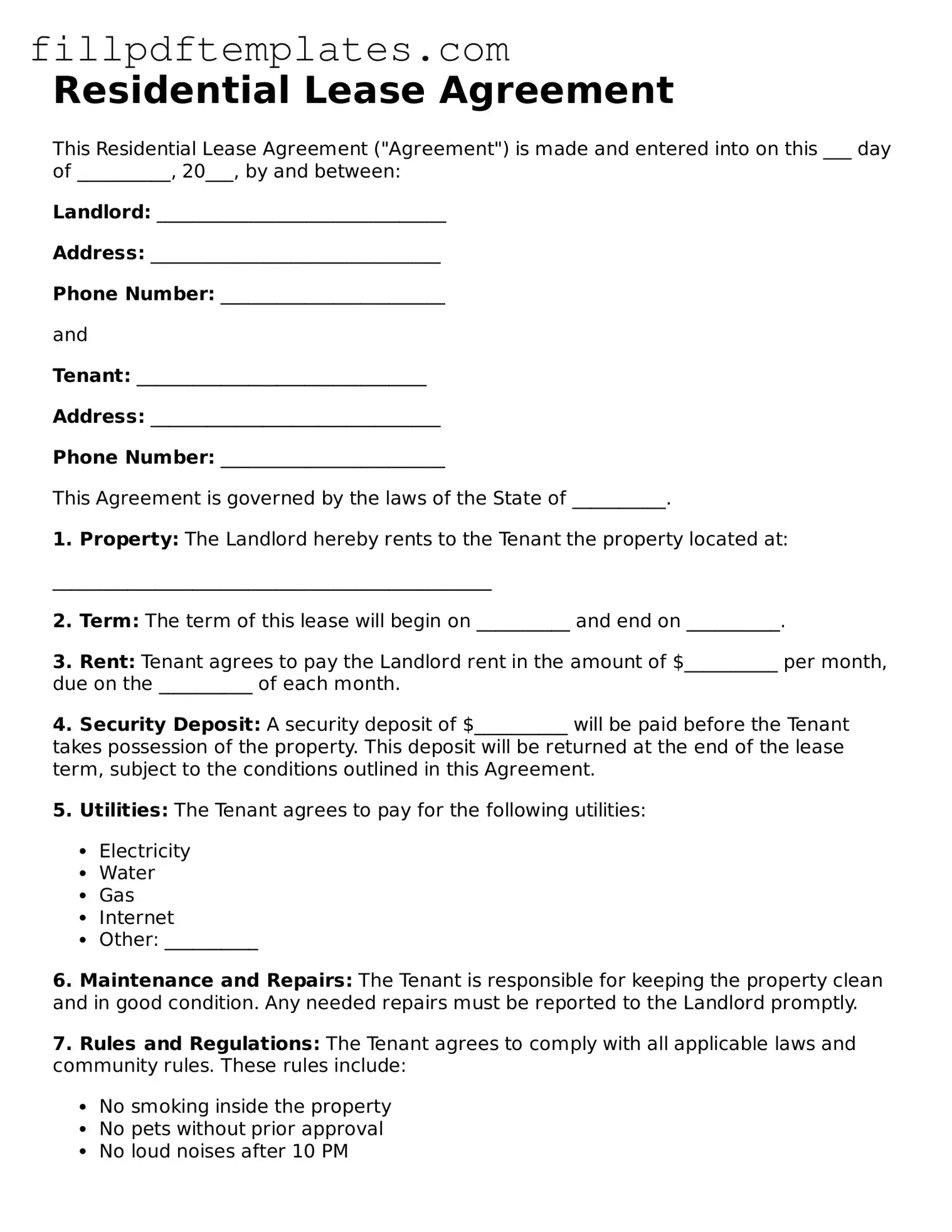Residential Lease Agreement
This Residential Lease Agreement ("Agreement") is made and entered into on this ___ day of __________, 20___, by and between:
Landlord: _______________________________
Address: _______________________________
Phone Number: ________________________
and
Tenant: _______________________________
Address: _______________________________
Phone Number: ________________________
This Agreement is governed by the laws of the State of __________.
1. Property: The Landlord hereby rents to the Tenant the property located at:
_______________________________________________
2. Term: The term of this lease will begin on __________ and end on __________.
3. Rent: Tenant agrees to pay the Landlord rent in the amount of $__________ per month, due on the __________ of each month.
4. Security Deposit: A security deposit of $__________ will be paid before the Tenant takes possession of the property. This deposit will be returned at the end of the lease term, subject to the conditions outlined in this Agreement.
5. Utilities: The Tenant agrees to pay for the following utilities:
- Electricity
- Water
- Gas
- Internet
- Other: __________
6. Maintenance and Repairs: The Tenant is responsible for keeping the property clean and in good condition. Any needed repairs must be reported to the Landlord promptly.
7. Rules and Regulations: The Tenant agrees to comply with all applicable laws and community rules. These rules include:
- No smoking inside the property
- No pets without prior approval
- No loud noises after 10 PM
8. Termination: Either party may terminate this lease by providing a written notice of at least ___ days prior to the desired termination date.
9. Governing Law: This Agreement shall be construed in accordance with the laws of the State of __________.
In witness whereof, the parties hereto have executed this Agreement as of the date first above written.
______________________________ (Landlord Signature)
______________________________ (Tenant Signature)
Date: __________________________
